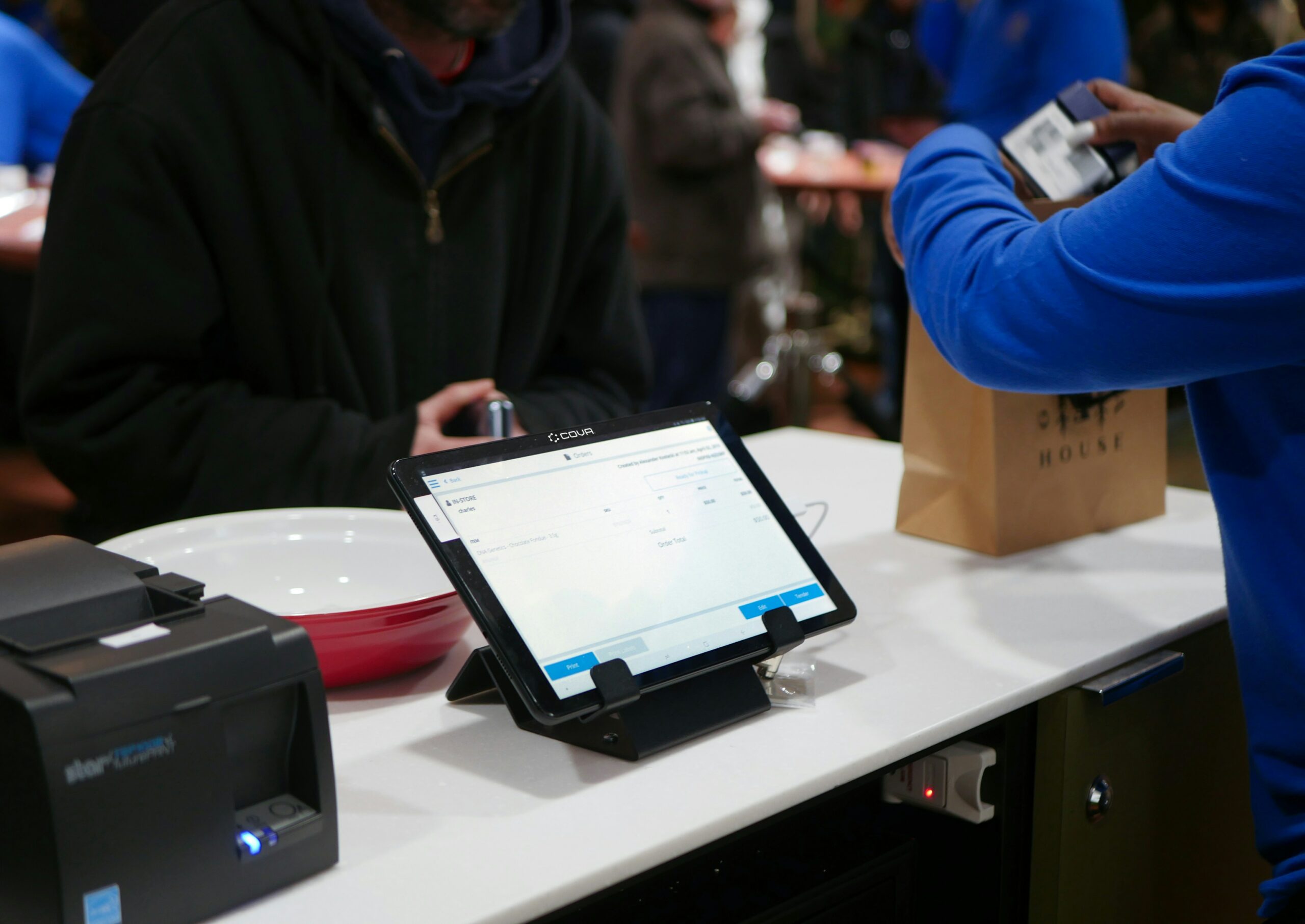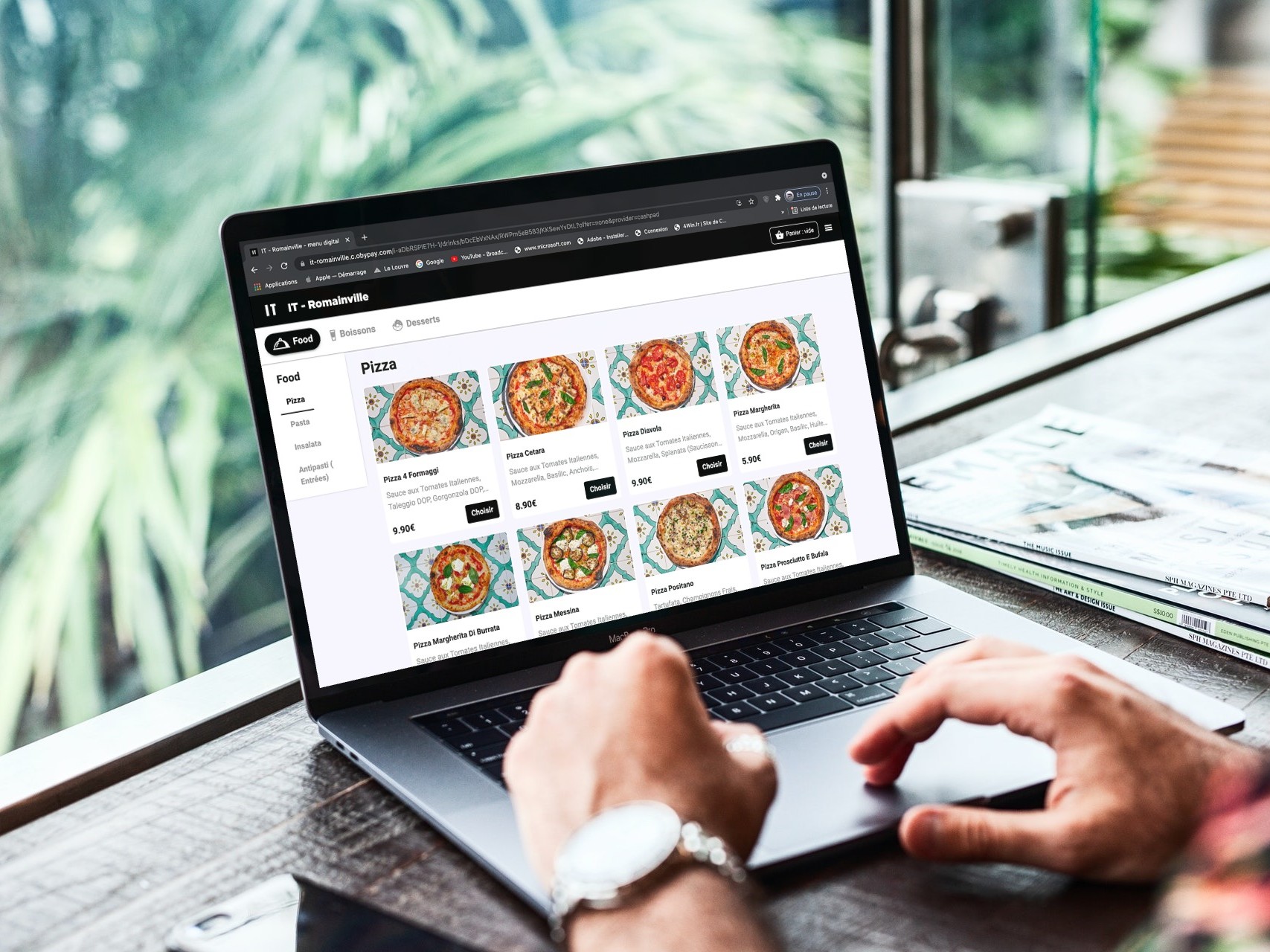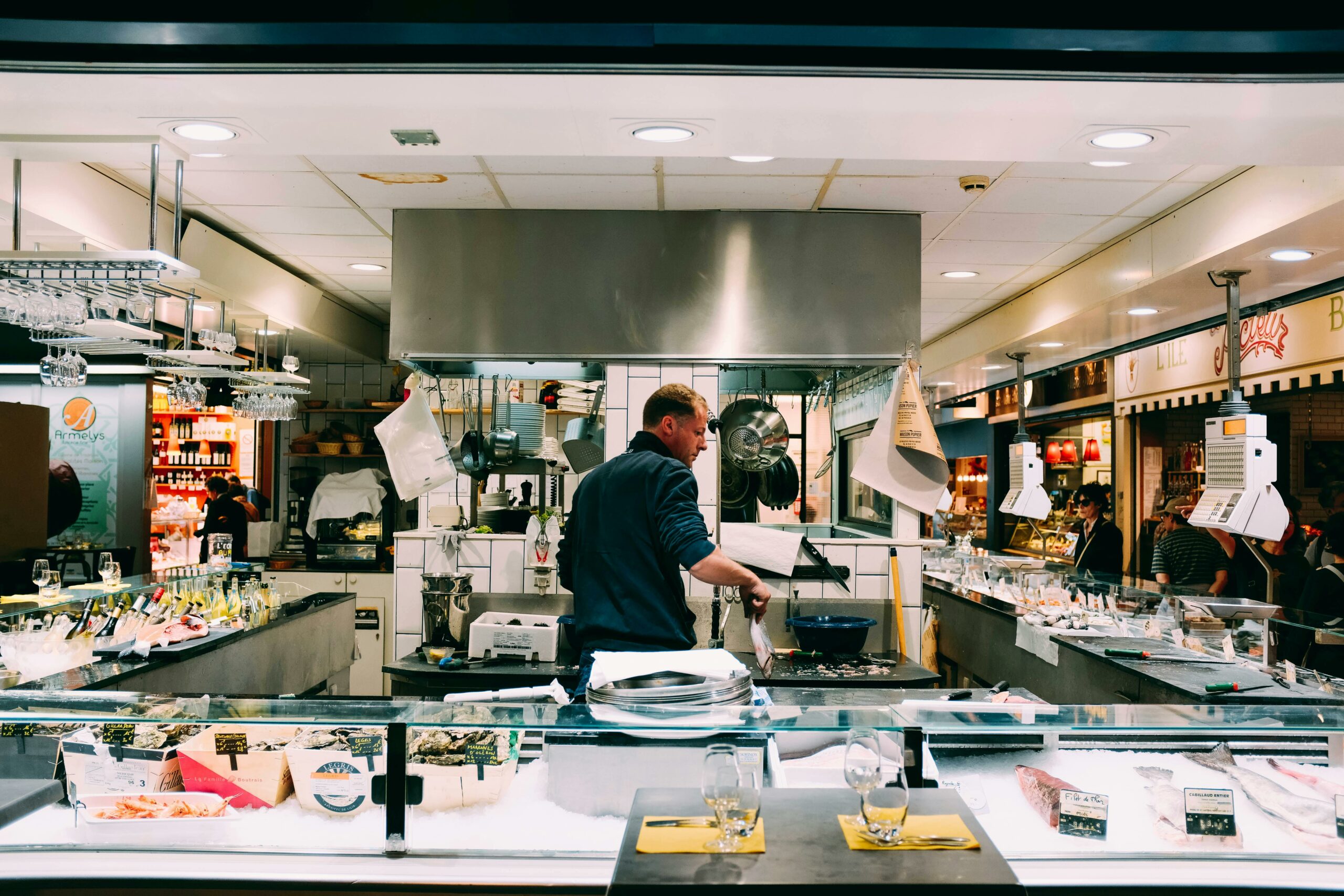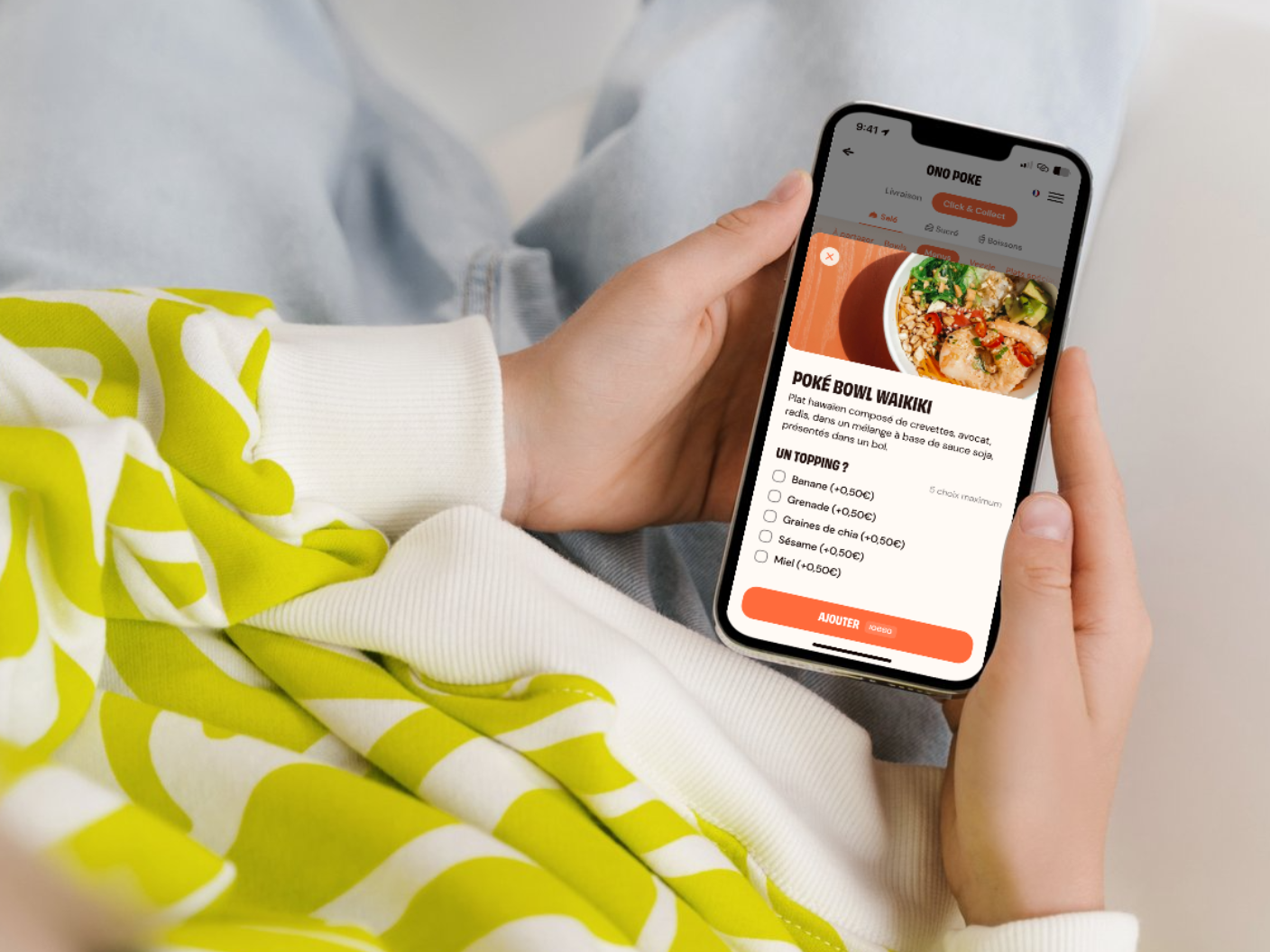Restaurant: 10 tips for choosing the right cash register software
December 10, 2024
Choosing the right POS software is a key step for any restaurateur.
This tool is at the heart of your day-to-day management It impacts service, finances and even the customer experience.
But with so much on offer, it can be hard to find your way around.
In this article, we have compiled 10 practical tips to help you make the right choice.
From identifying your needs to evaluating the software, every step of the way will help you find a solution that fits your business today... and tomorrow.
Whether you are independent restaurateur, food court manager, or expanding multi-brand businessThese recommendations will help you invest in the right tool, without unpleasant surprises.
01. List your needs: your specifications
Before looking at what cash register software can offer, take a moment to lay the groundwork: list your needs and constraints.
It may seem obvious, but it's a step that's often overlooked. Yet it can save you a lot of time later on.
Why do it upstream? Because it keeps you from being swayed by features that, on paper, look interesting but may not be useful on a day-to-day basis. Or worse, missing out on an important need by saying to yourself, "We'll see about that later."
Here are a few questions to get you started:
➜ What is indispensable? For example: inventory management, sales tracking, loyalty programs, etc.
➜ What tools do you already use? Will the new software need to be compatible with your current equipment (terminals, kiosks, tablets)?
➜ What are your constraints? Lack of time, poorly trained teams, limited budget...
➜ And tomorrow? Think about your future plans: opening a second restaurant, integrating new solutions like Click & Collect, etc.
The idea is not to foresee everything, but to have a clear vision at any given moment. This list will serve as a guide to help you compare solutions and avoid spreading yourself too thin.
02. Prioritize your work
Once you've drawn up your list of needs, it's time to move on to the next step: prioritize what really matters.
You may not be able to have everything right away, so it's best to define your priorities and make a choice that addresses the essentials first.
Go back over your list and ask yourself the right questions:
➜ Which features are non-negotiable? For example, if you manage a high-flow facilityA quick payment management function could be interesting.
➜ What can wait? Perhaps advanced data analysis tools are interesting, but not immediately essential.
➜ What are your current pain points? Focus on what's wasting your time or money today.
The idea is to identify the features that will have a direct impact on your daily life.
For example:
✔ Manage your inventory more easily to avoid stock-outs.
✔ Streamline service by integrating terminals or tablets for orders.
✔ Better understand your sales with clear, accessible statistics.
Ranking your priorities, you can be sure you won't be seduced by unnecessary options. This will also help you stay within your budget, while having software that's adapted to your real needs.
Once you've defined your priorities, you can compare solutions with a clear grid in mind.
The next step is to define your budget!
03. Define your budget
Now that you have a clear vision of your needs and priorities, it's time to talk budget.
This step is essential to avoid wasting time on software that's out of your reach or, on the contrary, missing out on a high-performance solution out of a misplaced concern for savings.
To define your budget, take into account :
Initial costs :
➜ Software purchase or installation costs.
➜ Additional equipment if required (tablets, printers, etc.).
Recurring costs :
➜ Monthly or annual subscription.
➜ Maintenance, updates, technical support.
Additional options :
➜ Advanced features (detailed statistics, marketing tools, etc.).
➜ Associated services such as training and on-site assistance.
Also consider how much the software can save or gain you:
✔ Automation reduces human error.
✔ Save time managing orders and payments.
Finally, keep in mind that the cheapest is not always the most profitable. The key is to find software that offers good value for money and can evolve with your needs.
With a clear budget in mind, you can compare solutions with complete peace of mind, without the risk of spending more than you need to or underinvesting in your business. a key tool for your business.
04. Check legal compliance
Choosing a cash register software is about more than functionality or price. You should also check that it complies with current legal requirements.
In France, for example, the law requires that any cash register software used by a merchant must be certified to guarantee data reliability, security and traceability.
Here's what you need to check:
➜ NF525 certification or equivalent : This standard guarantees that the software complies with French tax regulations. If your software is not certified, you could be fined up to €7,500 per non-compliant program.
➜ Supplier's certificate : ask for an official certificate proving that the software complies with legislation. This is an additional guarantee in the event of a tax audit.
➜ Legal updates : make sure your software can be updated to keep pace with changing regulations. Laws change, and your software needs to keep up.
Why is this important? Because non-compliant software can not only lead to sanctions, but also compromise the transparency of your management.
05. Specialized or general-purpose software: what's the right choice for your restaurant?
When it comes to choosing cash register software, you'll have two main options: opt for a specialized restaurant solution, or choose general-purpose software. The choice depends not only on your needs, but also on the nature of your business.
Here's a quick comparison to help you:
Specialized cash register software
For whom? Restaurateurs, food courts, cafésor any activity with specific needs.
Advantages :
➜ Adapted features : tip management, multi-services, table order-taking, stock management, etc.
➜ Better understanding of industry constraintssuch as peak periods or online ordering.
➜ Support designed for restaurateurs (technical support, customized training).
Disadvantage : May cost a little more than general-purpose software.
General-purpose cash register software
For whom? Businesses with basic cash management needs, or restaurants with simplified operations.
Advantages :
➜ Often more affordable.
➜ The interface is sometimes easier to learn if you have few requirements.
Disadvantages :
➜ Limited functionality : not always adapted to the specific needs of the foodservice industry (e.g. room management, customizable menus).
➜ Less flexible to support the growth of your business (multi-establishment, loyalty programs, etc.).
How to choose?
Ask yourself 2 key questions:
➜ Are my needs specific to catering? If so, specialized software will often be more appropriate.
➜ Will my business grow? If you're planning to open new facilities or add new services (delivery, Click & Collect), opt for a solution that can grow with you.
In a nutshell: specialized software is a tailor-made investment for a restaurateur. General-purpose software may suffice if your needs are basic and you're looking for a simple, cost-effective solution.
06. Prioritize compatibility with your tools and solutions
Good cash register software should integrate easily into your working environment. Before making your choice, make sure it's compatible with the tools and solutions you already use or plan to add in the future.
Here are the points to check:
01. Hardware compatibility
Check that the software works with your existing hardware:
➜ Printers (tickets, invoices).
➜ Payment terminals (TPE).
➜ Control panels or terminals.
If you need to buy new equipment, make sure it's available, reliable and within your budget.
02. Software integrations
Your cash register software must be able to communicate with your other tools:
➜ Online ordering solutions (Click & Collect, delivery).
➜ Inventory management tools to avoid shortages or surpluses.
➜ CRM and marketing tools to personalize your loyalty actions and track your customers.
➜ Accounting software to facilitate financial management and tax returns.
Why is this important?
Software that doesn't integrate well with your current tools can slow down your operations and generate errors. Conversely, good compatibility simplifies day-to-day management, improves your team's efficiency, and saves you time.
Take the time to ask the supplier for a compatibility list and, if possible, test the integration before signing. You'll have more peace of mind in the long term.
07. Find out more about installation and support
Choosing high-performance cash register software is all well and good, but it's not enough. but it has to be easy to set up and accompanied by a good support system..
A complicated installation or lack of training can quickly turn an investment into a headache for your team.
Installation: what to check?
➜ Installation time : how long does it take to get the software up and running? Ideally, it should be quick, so as not to disrupt your business.
➜ Technical support : Does the supplier offer on-site or remote software configuration support?
➜ Hardware requirements : do you need to buy new equipment or adapt existing ones?
➜ Updates : Is the software regularly updated, and are these updates easy to install?
Training and support: essential for your team
➜ Initial training : getting to grips with the system is essential to avoid errors. Check whether the supplier offers training for you and your staff.
➜ Technical support : what are the opening hours and contact details (telephone, e-mail, chat)?
➜ Documentation : does the supplier provide clear guides or tutorials to answer common questions?
Why is this important?
Poorly installed or misunderstood software can quickly slow down your operations, frustrate your teams, and harm the customer experience. Conversely, the right support ensures a smooth transition and optimal use from the outset.
Take the time to ask the supplier about these points before you commit yourself. You'll avoid unpleasant surprises and be able to concentrate on your business with complete peace of mind.

08. Study feedback
Take the time to learn about the experiences of other users. Feedback, whether from restaurateurs like you or from online reviews, is a mine of information for assessing the reliability of a solution.
Where to look for these returns?
➜ Online notice: consult ratings and reviews on specialized platforms or social networks. Look for information on the software's reliability, the quality of customer service and the features that are really useful for everyday use.
➜ Professional network : talk to other restaurateurs. Those who already use POS software can share their concrete, unfiltered feedback.
➜ Case studies : some brands publish user testimonials. They can be useful for visualizing the software in context.
Why is this important?
This feedback enables you to anticipate a solution's weak points before you buy. It also gives you a more realistic view of what works well... and what doesn't.
09. Test the software before you commit
Never choose a cash register software without first testing it. What looks perfect on paper may turn out to be impractical or complicated to use on a day-to-day basis.
Why test before you buy?
➜ Evaluating the interface : is it intuitive? You and your teams need to be able to use it easily, even if you're not a computer expert.
➜ Testing key features : for example, product creation, ticket editing and online ordering. These options should work without a hitch.
➜ Check speed: slow software can disrupt your service, especially at peak times. Make sure everything runs smoothly.
➜ Check compatibility : try it out with your existing equipment (printers, VSEs, tablets) to avoid disappointment.
How to proceed?
➜ Request a demo: Most suppliers offer a free demonstration or trial period. Take advantage of this to manipulate the software in conditions close to your everyday life.
➜ Simulate a service: Test every step of the process, from order taking to checkout, to identify any potential bottlenecks.
➜ Get your teams involved: Ask them to test the software. Their feedback is invaluable, as they're the ones who'll be using it the most.
And if the test is inconclusive?
If the software doesn't live up to your expectations, or seems complicated to get to grips with, don't bother. A tool should simplify your management, not complicate it.
Take your time, it will save you regrets (and unnecessary costs).
10. Think about solution scalability
We've talked about it throughout this article: today's restaurant won't necessarily be tomorrow's.
Whether you're planning to add new services, open a facility or adapt to industry trends, your cash register software must be able to grow with you.
Why is scalability important?
➜ Supporting your growth : If you're opening a new establishment or switching to a multi-brand format, your software must enable centralized management.
➜ Integrate new functionalities : Needs may emerge, such as the management of control terminalsthe addition of a loyalty program or the installation of Click & Collect.
➜ Adapting to new technologies : The foodservice sector is evolving rapidly. Your software must be able to keep pace, for example with integrations for QR codes or mobile payments.
Points to check
➜ Regular updates : does the supplier offer updates to integrate new functionalities or adapt to legal changes?
➜ Modularity : Does the software allow you to add options à la carte, without having to change everything?
How to anticipate?
➜ Discuss your future plans with the supplier: opening a new outlet, adding services, developing a franchise, etc.
➜ Find out about the experiences of other restaurateurs: those who have developed their business with the same solution.
➜ Make sure the subscription or pricing model remains viable if your needs increase.
Investing in scalable software means thinking long-term. This way, you avoid having to change everything in a few years' time, and invest in a solution that will grow with you.
Discover our software partners
You now have all the information you need to choose the ideal cash register software for your restaurant.
At Obypay, we work with partner cash register software recognized for their reliability and functionality, tailored to the needs of restaurateurs.
These solutions integrate seamlessly with our tools, helping you to improve your day-to-day efficiency.
Would you like to find out more about our partners or get personalized advice? Please contact us.












